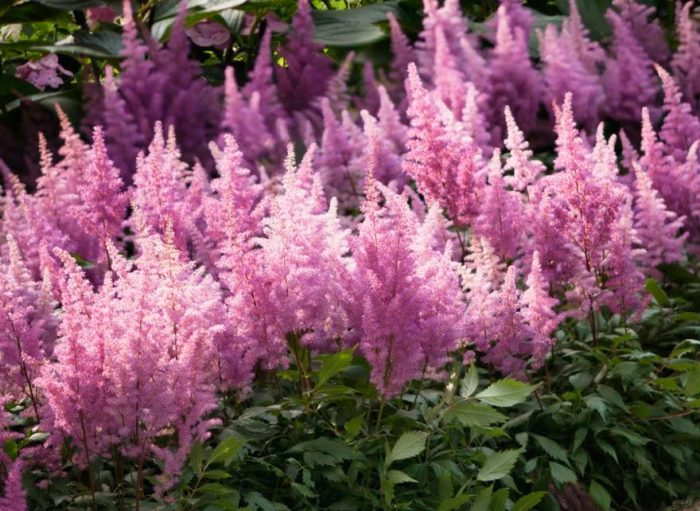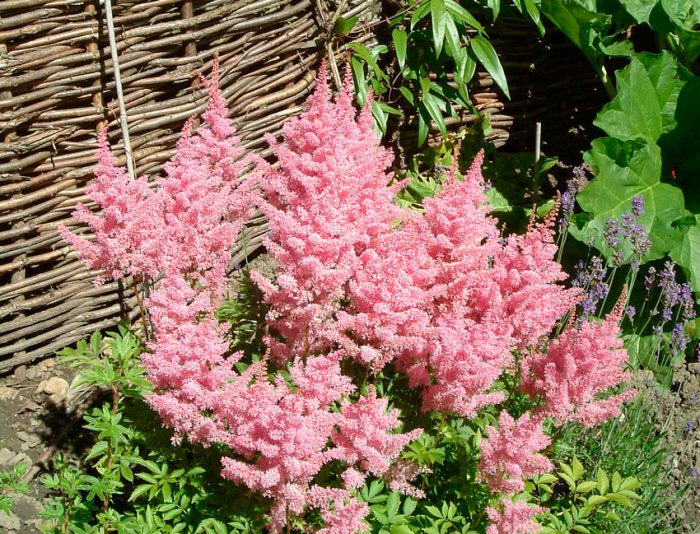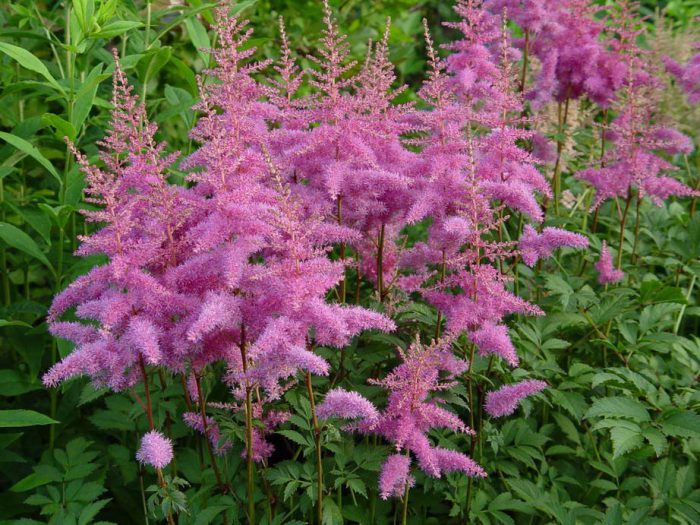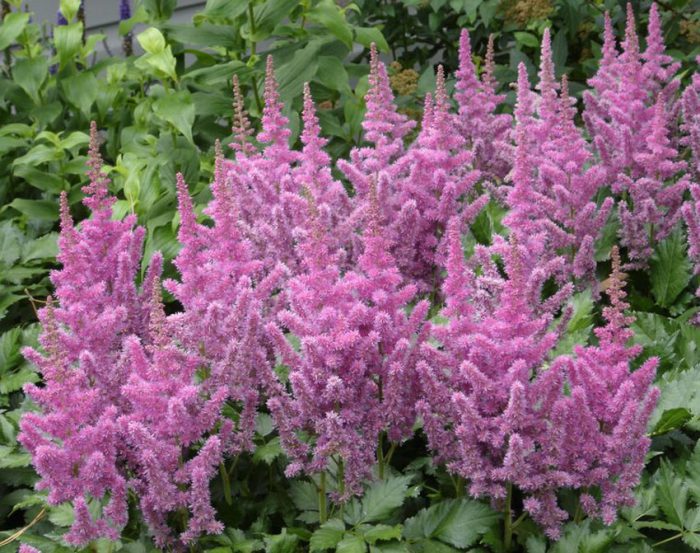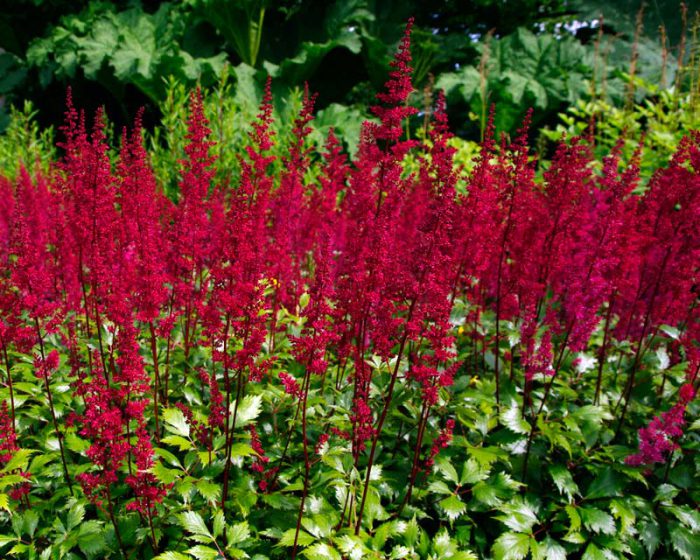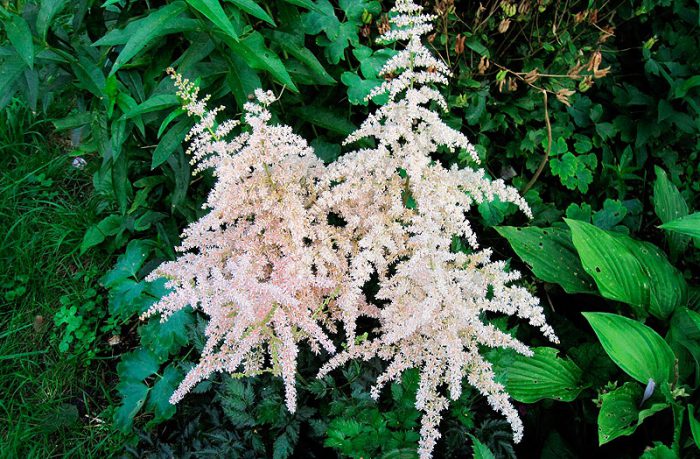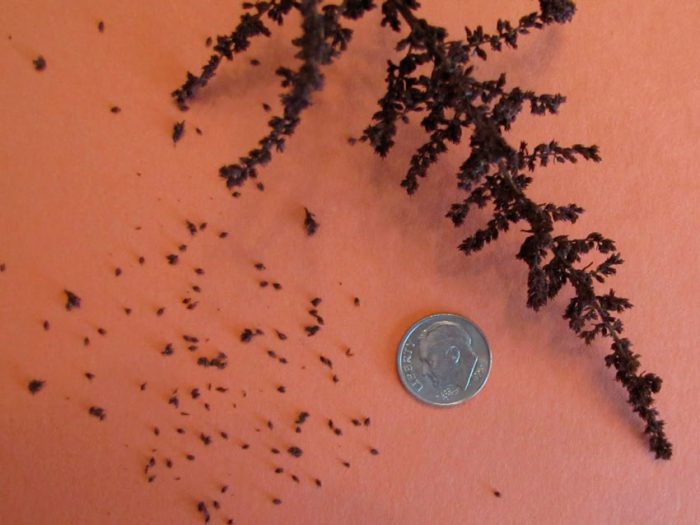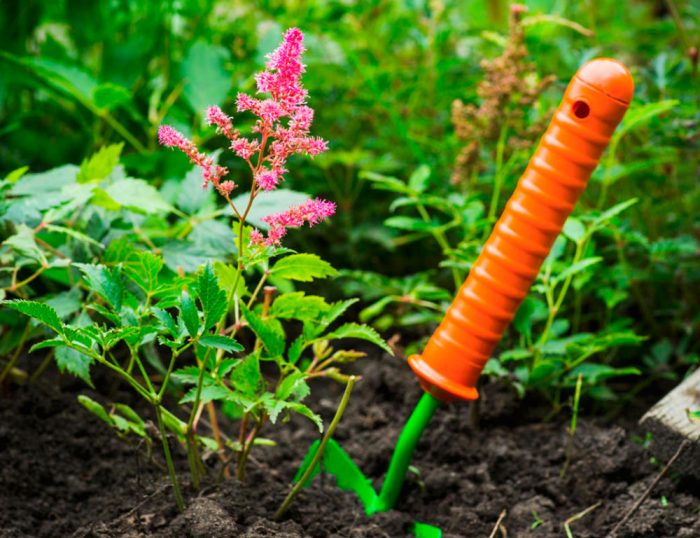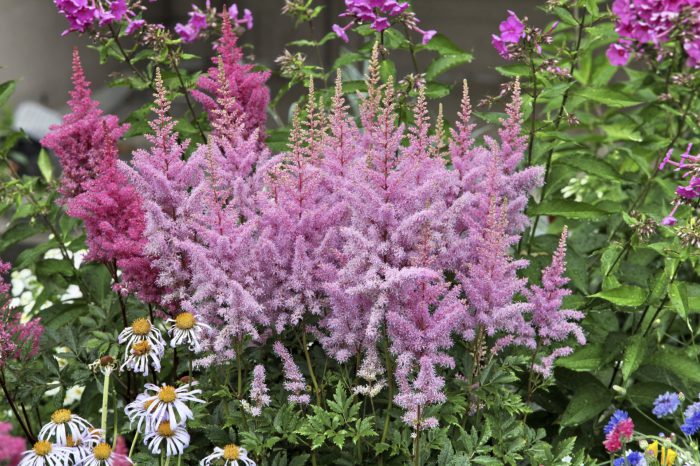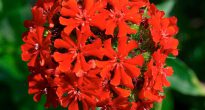Astilbe (Astilbe) belongs to the genus of perennial herbaceous plants of the saxifrage family. According to various sources, this genus unites 18-40 species. The plant was named by Lord Hamilton, a Scottish botanist, "a" means "without", and "stilbe" - "shine". He meant that the plant has non-shiny, dull leaf plates. The homeland of such a plant is North America, East Asia and the Japanese islands. Astilba prefers to grow along the banks of streams, in deciduous forests, as well as in those places where there is high humidity in the summer. The plant came to European countries from Japan in the late 18th or early 19th century. It was brought in by von Siebold and Karl Thunberg, who were hunters for strange plants. Since that time, it has gained great popularity as an ideal plant for shady gardens.
Content
Features of astilba
This plant is rhizome. Before winter, part of the astilba that is above the ground surface dies off. The height of erect shoots depends on the species and variety and can vary from 8 to 200 centimeters. Long-petiolate leaf plates are found both simple and twice or three times pinnate, the edge is serrated. Their color is greenish red or dark green. The woody rhizome can be dense or loose (depending on the species). At the top of the rhizome, new buds appear annually, while the lower part gradually dies off. The annual vertical growth is approximately 3–5 centimeters; therefore, in autumn it is recommended to sprinkle that part of the rhizome that is exposed with fertile soil.
Lacy small flowers are collected in apical inflorescences. They can be painted in red, pink, white, lilac and purple. Flowering can begin from June to August. The shape of the inflorescences is rhombic, paniculate, and also pyramidal. Those species that have drooping inflorescences are especially effective. The fruit is represented by a capsule. All species are divided by flowering time into:
- early - last days of June, first - July;
- medium - July;
- late - August.
Astilba varieties with photos and names
Only 10 to 12 species of astilbe are cultivated. But many hybrid varieties of this plant were born thanks to breeders. Today there are about 200 varieties.The most popular are such hybrid groups as Arendsii Hybrida, Japanese hybrids Japonica Hybrida, Astilbe Chinensis and its varieties, and Astilbe simplicifolia.
Astilba Arends
There are 40 species that were born thanks to the selection of the main species - David's astilba, with other species. Sprawling powerful bushes can reach a height of one meter. Their shape can be pyramidal or spherical, the leaf plates are dark green. The terminal inflorescences can be colored lilac, pink, white or red. Flowering lasts longer than other species from July to August for 30-40 days. It has been cultivated since 1907. G. Arends created the best varieties of it. The most popular are astilba Gloria, Diamant, Weiss Gloria, Rubin, Glut, etc. The bush of Diamant can reach 0.9 meters in height, and Weiss of Gloria, Amethyst and Rubin - 0.8 meters. The inflorescences of Weiss Gloria and Gloria are diamond-shaped, and Gluta, Diamond and Rubin are paniculate.
Chinese astilba
The height of the bush can vary from 100 to 110 centimeters. Basal leaf plates have long petioles and a large size, and small glossy openwork stem leaves have short petioles. The length of dense inflorescences is from 30 to 35 centimeters. The color of small flowers is usually lilac, but white and pink are found. It has been cultivated since 1859. There are dwarf forms (var. Pumila hort.), Their height is 15–25 centimeters, and also forms with conical inflorescences var. Taquetii. Such plants thrive in well-lit areas. The most effective varieties are: Astilbe chinensis taquetii "Purpurlanze" - amazing lilac color, Astilbe chinensis "Vision in Pink" - pink color, Astilbe chinensis (Pumila Hybrida) "Vision in Red" - dark purple.
Japanese astilba
The height of compact bushes does not exceed 0.8 meters. Glossy leaf plates are most often ornamental. White or pink flowers are collected in paniculate inflorescences. Flowering begins earlier than in other species, while even dried inflorescences will be a wonderful decoration of the garden and will last until late autumn. Cultivated since 1837 G. Arends is the creator of the first varieties. Modern varieties are resistant to cold, and they also take root well. The most popular are: Deutschland (Astilbe japonica Deutschland) - white, Rhineland (Astilbe japonica Rheinland) - with beautiful pink flowers, Europe (Astilbe japonica Europe) - an elegant plant with light lilac flowers, Montgomery (Astilbe japonica Montgomery) - its fluffy panicle inflorescences are colored burgundy or deep red.
Astilba common
Hybrida (Hybrida) and Thunbergii Hybrida hybrids react extremely negatively to low air humidity, as well as to heat. The height of the bushes can vary from 20 to 50 centimeters. Very beautiful inflorescences give the plant airiness. The most spectacular varieties: Praecox Alba - with loose white inflorescences, Bronze Elegans - the variety got its name from bronze leaf plates with pale pink inflorescences, Straussenfeder - 0.9 m bush height, and coral inflorescences, Professor van der Wielen - has white inflorescences and belongs to the Thunberg hybrids.
Growing astilba from seeds
Astilba can be propagated with the help of seeds, as well as divide the bush or separate the rhizome from the bud. Flower growers with little experience most often resort to vegetative propagation methods. However, only the seed propagation method allows the creation of new varieties. Seeds are sown in March. For planting, you will need a wide container, which should be 15 centimeters high. It is filled with a mixture of sand and peat, taken in equal parts. A layer of snow of a centimeter thickness is poured over the soil. In the event that there is no snow on the street, you can collect it in the freezer of your refrigerator. The seeds are spread directly over the surface of the snow, which melts and carries them deep into the substrate. Further, the seeds will need to be stratified. To do this, when the snow has completely melted, the container must be placed in a bag, which should be transparent, and then put on the refrigerator shelf.The container should stay there until the seedlings appear (about 3 weeks). Then the container is removed to a well-lit place with a temperature of 18 to 22 degrees. The plants must be watered very carefully, otherwise they will die. So, water should be poured exclusively at the root, or you can inject it from a syringe directly into the substrate. After the plants have 2 or 3 true leaf plates, they need to be planted in separate pots.
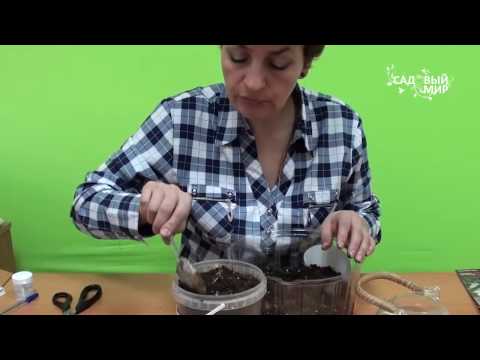

Watch this video on YouTube
Landing in open ground
It is quite simple to grow astilba, the main thing is to properly care for it. Such a plant is planted in open ground in May or June. A suitable area should be located on the north side of the building and shaded by bushes or trees. It should be noted that some of the varieties can grow in sunny areas, while their flowering will be distinguished by its abundance, but it does not last very long. It is great if there is an opportunity to place an astilba in the immediate vicinity of a pool or a fountain. Loamy soil is ideal, while the groundwater should lie close enough to the soil surface. Suitable acidity pH 5.5–6.5. It is recommended to plant Astilbe together with the hosts. The fact is that the hosts do not allow the soil to dry out quickly and get too hot on hot days.
Before you start landing, you need to prepare the site. To do this, dig up the soil and remove all the weeds along with the roots. Then rotted manure, compost or rotted peat are introduced into the soil (2 buckets of fertilizer per 1 square meter). The depth and width of the planting pit varies from 20 to 30 centimeters, while a distance of 30 centimeters must be maintained between the bushes. Pour ½ cup of wood ash into each hole, as well as 1 large spoonful of mineral fertilizer. After this, the holes should be well watered. When planting, the plant is placed in such a way that its growth bud is buried in the ground by at least 4–5 centimeters. Pour the required amount of soil into the hole and compact it. Then the surface of the soil is sprinkled with a layer of mulch (peat or humus), the thickness of which is from 3 to 5 centimeters.
Features of garden care
It should be remembered that astilba has one feature, namely, its rhizome gradually grows upward, while its lower part dies off over time. This means that after some time the bush will not be able to feed, therefore it is so important to huddle it on time. Make sure that the soil does not dry out. Such a plant needs regular watering. However, mulching can help to make watering more rare and get rid of weeds, as well as frequent loosening of the soil surface, and still prevent overheating of the root system. The abundance of watering varies from medium to high, and this directly depends on the species, as well as the variety of the bush. But it must be remembered that when the inflorescences are forming, it is necessary to water the bush systematically and abundantly. During the dry period, watering is carried out 2 times a day, or rather, in the morning and in the evening.
Top dressing
In one place, a flower can be grown from 5 to 7 years. But in those cases, if you provide the astilbe with proper and good care, as well as feed her in a timely manner, then she can do without a transplant for up to 20 years. An approximate plan for feeding Astilba:
- In the spring, nitrogen-containing fertilizers must be applied to the soil. To do this, humus is introduced during hilling.
- In mid-June, the plant needs potash fertilization. For this, 500 ml of a solution consisting of a bucket of water and 2 large tablespoons of potassium nitrate is taken for 1 bush.
- When the flowering ends, a phosphorus-containing fertilizer will be required. For 1 bush, 20 grams of superphosphate is taken.
When the plant is fed, the surface of the soil must be loosened and mulched.
Pests
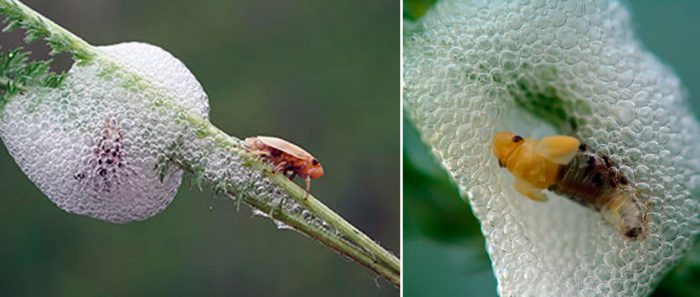

In such an introduced plant, the main pests remained in those places where it comes from. In mid-latitudes, gall and strawberry nematodes, as well as slobbering pennits, can harm him. In this case, the penny prefers to settle in the leaf sinuses. Over time, saliva-like foamy discharge is formed in them, while inside them there are leafhopper larvae. The leaf plates begin to wrinkle and spots of yellow color appear on them. The infected bush withers partially or completely. In order to exterminate such a pest, you can use a confidor, rogor, karbofos or actara.


The strawberry nematode settles on the leaf plates, buds and flowers of the plant, after which their deformation occurs, as well as the appearance of necrotic spots of brown or yellow color. The growth of the bush becomes slower.
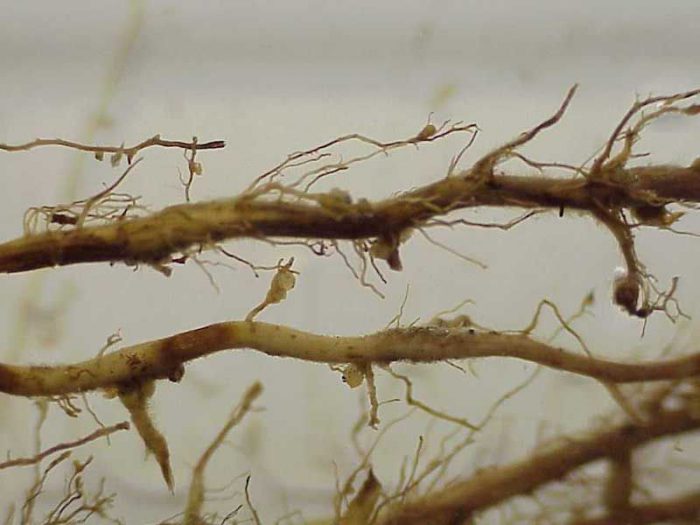

Gall nematode settles on the roots of a plant, while small galls (growths) appear on their surface, and nematodes are located inside them. In the second growing season, Gauls are already very well distinguishable. The growth and flowering of such bushes deteriorates significantly, and in some cases their death occurs. Carefully inspect the bushes and those on which there are clear signs of the disease must be dug up and destroyed. It is important to carry out timely weeding in the first growing season. The overgrown root system of the plant during the second growing season will drown out the weeds itself. Treat astilbe with Fitoverm.
After flowering
After flowering, it is recommended to leave the drying inflorescences on the bush, because they will decorate your garden with their spectacular appearance for a long time. However, before wintering, astilbe shoots must be cut so that they are flush with the ground surface. Sprinkle the area with a layer of mulch, and this must be done if the bushes have recently been planted in the process of dividing the rhizome. With the help of division, you can rejuvenate the plant, while it is worth considering that the older the bush, the more difficult it is to divide its woody root. It is recommended to divide the division at the beginning of the spring period, while a growth bud should be present on each division. Astilba transplanted in this way begins to bloom after a year. Such bushes for wintering must be sprinkled with mulch, while, if the transplant was carried out in the fall, it is also recommended to cover them with spruce branches, which will protect them from autumn, winter and spring frosts.
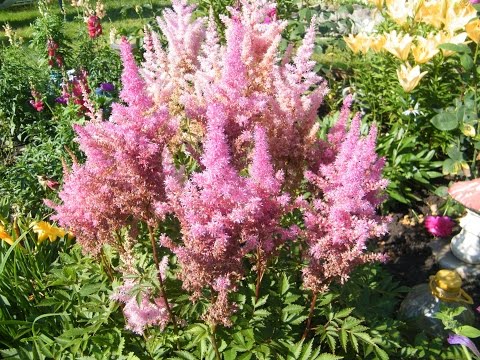

Watch this video on YouTube

